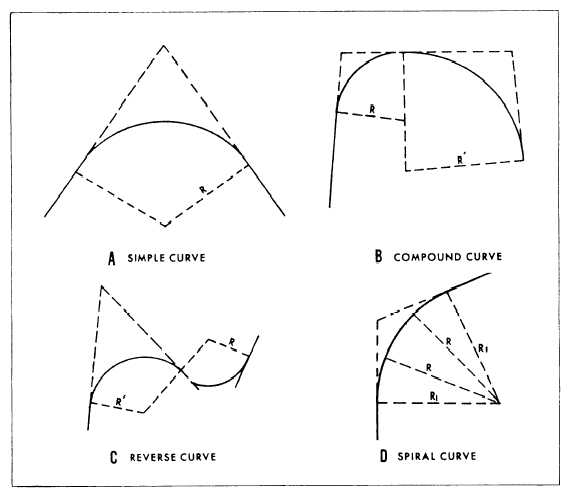TYPES OF HORIZONTAL CURVES
There are four types of horizontal curves. They are
described as follows:
1. SIMPLE. The simple curve is an arc of a circle
(view A, fig. 11-2). The radius of the circle determines
the sharpness or flatness of the curve.
2. COMPOUND. Frequently, the terrain will
require the use of the compound curve. This curve
normally consists of two simple curves joined together
and curving in the same direction (view B, fig. 11-2).
3. REVERSE. A reverse curve consists of two
simple curves joined together, but curving in opposite
direction. For safety reasons, the use of this curve
should be avoided when possible (view C, fig. 11-2).
4. SPIRAL. The spiral is a curve that has a varying
radius. It is used on railroads and most modem
highways. Its purpose is to provide a transition from the
tangent to a simple curve or between simple curves in
a compound curve (view D, fig. 11-2).
ELEMENTS OF A HORIZONTAL CURVE
The elements of a circular curve are shown in
figure 11-3. Each element is designated and explained
as follows:
PI POINT OF INTERSECTION. The point of
intersection is the point where the back and for-
ward tangents intersect. Sometimes, the point
of intersection is designated as V (vertex).
I INTERSECTING ANGLE. The intersecting
angle is the deflection angle at the PI. Its value
is either computed from the preliminary
traverse angles or measured in the field.
A CENTRAL ANGLE. The central angle is the
angle formed by two radii drawn from the
Figure 11-2.—Horizontal curves.
11-2

